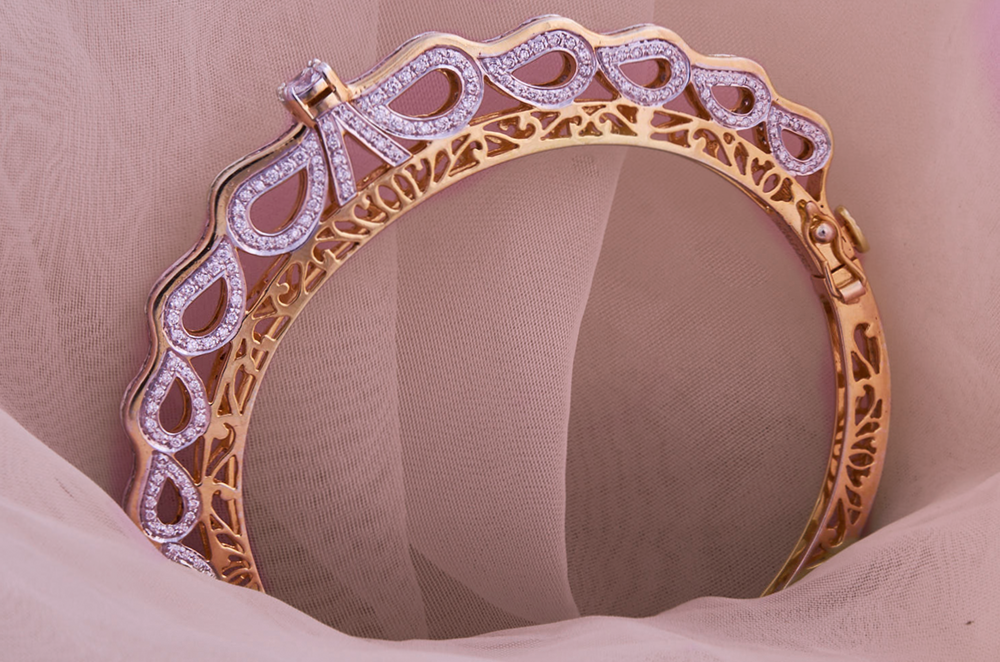
What you should know before buying your diamond jewellery- The 4 Cs
Have you ever been confused about buying diamond jewellery because you are unaware of the way to measure the diamond value? Have you tried to read through the details on diamonds to make sure your jeweler is justifying the price for the piece?
Look no further; we have created an easy and understandable guide for you that you can use when shopping for diamond jewellery.
THE 4 Cs of Diamonds
The 4 Cs are a standard measure followed by the jewellery industry to understand the value of the diamond.
CUT
The Diamond cut determines the craftsman ship cutting the diamond in a proportionate and symmetrical manner. The way the diamond is cut relates to the amount of light it can capture and reflect to sparkle.
There is a chart that shows the grades of diamonds to classify them as idea cuts or poor cuts.

As you can see in the image, the Ideal and Shallow cuts bounce of more light and hence sparkle more as compared to the other cuts. Cuts are one of the most important measures of a diamond amongst the 4 Cs, because it directly affects the diamonds quality and beauty. Hence diamonds with better cuts demand a higher price and vice-versa.
BUYING TIP: Be sure to ask your jeweller about the cut if you find the price on the higher end, it could be because of the cut.
CLARITY
The clearer a diamond, the more brilliant the diamond is. Clarity depicts the flawlessness of a diamond. Diamonds with no natural inclusions or marks are known to be flawless, as they do not disrupt the reflection of light. While a diamond with more significant marks or inclusions that are visible to the naked eye are of a lower grade in terms of clarity and hence demand a lower cost too.
Diamond cuts also affect the clarity of a diamond, for example if the cut is rectangular and wide like the Emerald cut, then the possibility of seeing inclusions is more as compared to diamonds that are faceted or of circular cuts like the princess cut or round cut.

BUYING TIP: If you are looking for a brilliant diamond – look out for diamonds with clarity grades like VVS2 or higher for all diamond shapes.
COLOUR
Not all diamonds are white. Diamonds are a naturally formed stone that have a slight yellowish tinge as well.
In gemology, the diamond colours are graded across a spectrum from yellowish brown to pure white.
The scale begins with ‘D’ which is colourless and pure white and ranged to ‘Z’ which is yellowish.

BUYING TIP: To the unaided eye, there is not much difference between the near colourless and colourless diamonds, hence as a safe choice you can use the near colourless diamonds with gold or rose gold in jewellery because the warm tones can set off any yellow tinge in the diamonds. On the other hand for setting diamonds in platinum or white gold go for the colourless diamonds.
CARAT
Carat is the measuring standard for the weight of a diamond. It also depicts how big a diamond looks, although there are many other factors that relate to size.
Two diamonds of the same carat weight can be of different sizes, this is due to the difference in weight distribution, diamond cut and shape. Sometimes brilliance in terms of the cut and shape is compromised to make a diamond appear bigger in size.

BUYING TIP: We recommend going for a diamond that has a good balance of the cut and carat weight to ensure the brilliance and shine of the diamond. When shopping for diamond jewellery, remember that size is not worth it if the cut is sacrificed, the diamond cut matters the most followed by colour and clarity and finally carat weight. Keep that in mind for the ultimate brilliance and shine in your diamond piece.
We hope this guide has simplified your diamond jewellery shopping process for you. We at Antara believe in transparent and honest communication with our customers regarding the specifications of each piece. So the next time you are in our store shopping for jewellery be assured that your decisions are made in a safe haven that is built on trust and quality.